
The provinces of Sweden are historical, geographical and cultural regions. Sweden has 25 provinces; they have no administrative function but remain historical legacies and a means of cultural identification pertaining to dialects and folklore.

The counties of Sweden are the administrative subdivisions of Sweden. They are not regarded as geographical areas by Swedes as they are not connected to dialects or identity, which is a role fulfilled by the historical provinces of Sweden. Sweden is today divided into 21 counties; however, the number of counties has varied over time, due to territorial gains/losses and to divisions and/or mergers of existing counties. This level of administrative unit was first established in the 1634 Instrument of Government on Lord Chancellor Count Axel Oxenstierna's initiative, and superseded the landskap, in order to introduce a more efficient administration of the realm. At that time, they were what the translation of län into English literally means: fiefdoms. The county borders often follow the provincial borders, but the Crown often chose to make slight relocations to suit its purposes.

Västerbotten, known in English as West Bothnia or Westrobothnia, is a province (landskap) in the north of Sweden, bordering Angermannia, Lapland, North Bothnia, and the Gulf of Bothnia. It is known for the Westrobothnian cheese, (Västerbottensost) named after the province.
Between 1634 and 2009, Finland was administered as several provinces. Finland had always been a unitary state: the provincial authorities were part of the central government's executive branch and apart from Åland, the provinces had little autonomy. There were never any elected provincial parliaments in continental Finland. The system was initially created in 1634. Its makeup was changed drastically on 1 September 1997, when the number of the provinces was reduced from twelve to six. This effectively made them purely administrative units, as linguistic and cultural boundaries no longer followed the borders of the provinces. The provinces were eventually abolished at the end of 2009. Consequently, different ministries may subdivide their areal organization differently. Besides the former provinces, the municipalities of Finland form the fundamental subdivisions of the country. In current use are the regions of Finland, a smaller subdivision where some pre-1997 läänis are split into multiple regions. Åland retains its special autonomous status and its own regional parliament.

Finland Proper or Southwest Finland is a historical province in southwestern Finland, administered by its historic capital of Turku. It borders Satakunta, Tavastia, and Uusimaa. It is also bounded by the Baltic Sea facing Åland. There was also a modern region by the name Finland Proper.

Tavastia is a historical province in the south of Finland. It borders Finland Proper, Satakunta, Ostrobothnia, Savonia and Uusimaa.
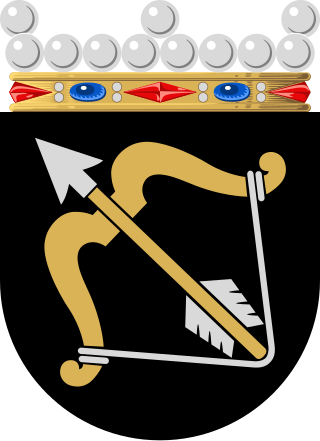
Savonia is a historical province in the east of Finland. It borders Tavastia, Ostrobothnia and Karelia. Savonia is now divided into two provinces: North Savonia and South Savonia. The largest cities in Savonia by population are Kuopio, Mikkeli, Savonlinna, Varkaus and Iisalmi.

Häme is the name of a geographical region in Finland, associated with the Tavastians, or Häme people (hämäläiset), a subgroup of the Finnish people. The precise area referred to can vary depending on the context.
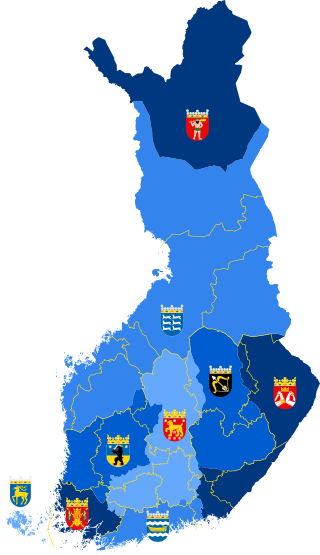
The historical provinces are former administrative or cultural areas of Finland, with origins from the slottslän of the Middle Ages. The historical provinces ceased to be administrative entities in 1634 when they were superseded by the counties, a reform which remained in force in Finland until 1997. The historical provinces remain as a tradition, but have no administrative function today.

Southern Finland was a province of Finland from 1997 to 2009. It bordered the provinces of Western Finland and Eastern Finland. It also bordered the Gulf of Finland and Russia.
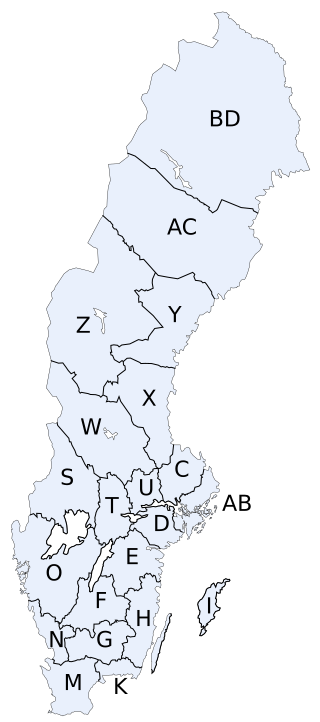
Län, lääni and len refer to the administrative divisions used in Sweden and previously in Finland and Norway. The provinces of Finland were abolished on January 1, 2010. In Norway, the term was in use between 1308 and 1662.
Nyland and Tavastehus County was a county of the Swedish Empire in Finland from 1634 to 1809.

Satakunta is a region of Finland, part of the former Western Finland Province. It borders the regions of Southwest Finland, Pirkanmaa, South Ostrobothnia and Ostrobothnia. The capital city of the region is Pori. The name of the region literally means hundred. The historical province of the same name was a larger area within Finland, covering modern Satakunta as well as much of Pirkanmaa.
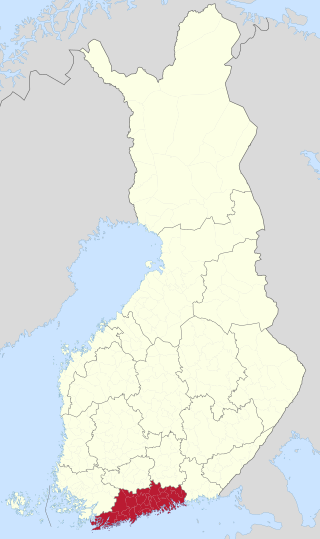
Uusimaa is a region of Finland. It borders the regions of Southwest Finland, Tavastia Proper (Kanta-Häme), Päijänne Tavastia (Päijät-Häme), and Kymenlaakso. Finland's capital and largest city, Helsinki, along with the surrounding metropolitan area, are both contained in the region, and Uusimaa is Finland's most populous region. The population of Uusimaa is 1,734,000.

Lapland, also known by its Swedish name Lappland, is a province in northernmost Sweden. It borders Jämtland, Ångermanland, Västerbotten, Norrbotten, Norway and Finland. Nearly a quarter of Sweden's land area is in Lappland.
The governorates of the Grand Principality of Finland were the administrative division of the Grand Principality of Finland as part of the Russian Empire from 1809 to 1917.
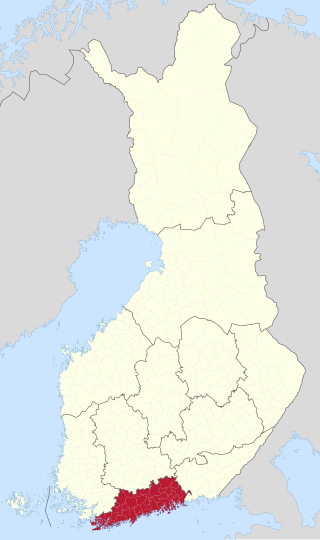
The Province of Uusimaa was a province of Finland from 1831 to 1997.
Kymmenegård County was a county of Sweden 1775-1809 and province of Grand Duchy of Finland 1809-1831.

The Province of Oulu was a province of Finland from 1775 to 2009. It bordered the provinces of Lapland, Western Finland and Eastern Finland and also the Gulf of Bothnia and Russia.
















